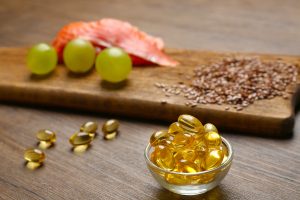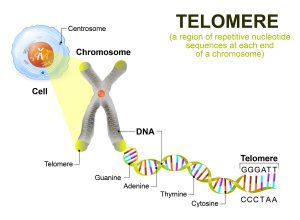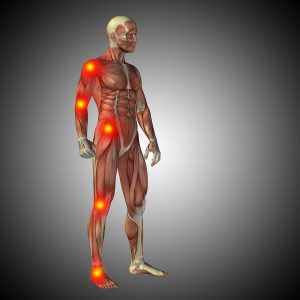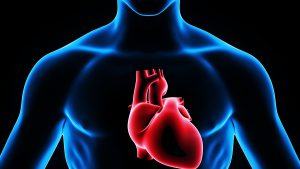Healthy oils for a healthy body? Quite frequently the news are full of articles that want to inform you what fat or oil to eat. At the end the consumer often faces information overload and confusion.
Here I am reviewing what we know about the various oils.
1. Coconut oil not as good as it was thought
This review article pointed out that coconut oil does elevate the bad cholesterol, called LDL cholesterol. This is not a desirable effect, as it can lead to heart disease and possibly heart attacks. On the other hand coconut oil also elevates HDL cholesterol, the good cholesterol that mobilizes LDL cholesterol. The article points out that coconut oil may be a better choice than butter. Butter does not elevate HDL cholesterol to offset the effects of LDL cholesterol. Researchers felt that the occasional use of coconut oil instead of butter would be justifiable. But they advised strongly against the daily use of coconut oil. Instead they recommended olive oil, canola or soybean oil, along with nuts and seeds, as your primary fats. I agree with olive oil, but have concerns about canola or soybean oil, as I explain it later in this article.
Dr. Andrew Weil reviewed coconut oil in Self Healing August 2014. He said that the effect on cardiovascular health remains largely unclear. He is not aware of any “study that has shown using coconut oil leads to significant weight loss”. It is basically a thumbs down assessment for coconut oil. You may want to use it occasionally for baking or a special Thai food meal.
Let’s remember that the long-lived populations such as in Okinawa and others never used coconut oil.
2. Polyunsaturated fatty acids used in processed food
A news release in 2016 describes new FDA food guidelines. They recommend that saturated fat should not exceed 10% of the total daily caloric intake, but there are still different opinions: some studies show that saturated fat may not be responsible for hardening of the arteries. Other studies have shown that breast cancer is more common in persons who consume more saturated fat .
In the 1980’s the news came out that saturated fats would be bad for arteries. At that time there was a switch to polyunsaturated fatty acids. These consist of safflower oil, canola oil, sunflower seed oil, corn oil, soybean oil and grape seed oil.
However, the irony is that these vegetable oils were highly unstable and lead to oxidation causing heart disease and cancer.
In contrast olive oil is a much more stable oil. And long-lived populations in the Mediterranean seem to be the proof, that it is a healthy fat source for them and for us.
Personally I have cut out polyunsaturated fatty acids out of my food and I suggest you do the same. We know now that polyunsaturated fatty acids lead to inflammation via the arachidonic acid pathway. This can cause gout, arthritis, diabetes, and inflammation of the arteries with subsequent clots causing heart attacks and strokes. I don’t need all of these diseases, I am doing fine without polyunsaturated fatty acids.
3. Omega-6 to omega-3 ratio
The cell membrane consists of two lipid layers at a specific ratio of omega-6 essential fatty acids and omega-3 essential fatty acids. It also contains triglycerides, phospholipids and protein. Safflower oil, canola oil, sunflower seed oil, corn oil, soybean oil and grape seed oil are mostly omega-6 fatty acids and the type of polyunsaturated fatty acids that prevail in processed foods. With the consumption of too much processed food the body has a problem constructing cell memranes. When you compare the metabolism of omega-6 fatty acids with that of omega-3 fatty acids, there is a fundamental difference. The linoleic acid of omega-6 fatty acids metabolizes into arachidonic acid, which causes pro-inflammatory mediators, PGE2 and LTB4. On the other hand with omega-3 fatty acids alpha-linolenic acid (ALA) is metabolized into EPA, DHA and the anti-inflammatory mediators PGE3 and LTB5.
Disbalanced omega-6 to omega-3 ratio
It is easy to understand why a surplus of omega-6 fatty acids from processed foods will disbalance the omega-6 to omega-3 ratio. This ratio should be 1:1 to 3:1, but many Americans’ omega-6 to omega-3 ratio is 6:1 to 18:1. Omega-6-fatty acids cause arthritis, heart disease and strokes. Be particularly careful in avoiding soybean oil, which is the most popular oil in the last few decades to foul up the omega-6 to omega-3 ratio through processed foods. Read labels to avoid soybean oil and other omega-6 fatty acids.
When it comes to balancing omega-3 and omega-6 fatty acids in your diet, be aware that nutritional balancing can help you restore the ideal omega-6 to omega-3 ratio of 1:1 to 3:1. An easy way is to simply cut out processed foods as much as possible. Supplement with molecularly distilled fish oil capsules to add more omega-3 fatty acids into your food intake.
4. Fish oil
What we learned from this is the importance of fish oil as a supply of omega-3 fatty acids. But nuts also supply us with omega-3 fatty acids. Eating fish three times per week is another way to get enough fish oil on board. There is a word of caution. Our oceans are so contaminated with mercury that you want to be careful and eat only fish low in mercury content. Avoid swordfish, tuna fish or grouper.
But wild salmon and mackerel are fish low in mercury and safe to eat. I would recommend that you eat seafood at least three times per week to have a good source of omega-3 fatty acid. In addition I would also recommend you take omega-3 supplements. I take it in the form of molecularly distilled high potency omega-3. I take 2 capsules twice a day. In addition I take 750 mg of krill oil once per day, another source of molecularly distilled marine omega-3 supplement.
5. Cold pressed virgin olive oil
Organic olive oil contains monounsaturated fatty acids that are neutral in terms of effects on the cardiovascular system. But it also contains a lot of polyphenols and among these in particular hydroxytyrosol that lower blood pressure and protects you from hardening of the arteries. This likely is the main reason why the Mediterranean diet is so healthy, apart from its emphasis on vegetables, which further makes it desirable. In a 2012 study from Spain it was found that mortality from heart attacks was 44% lower than that of a control group who did not incorporate olive oil in their diet.
Only two tablespoons of virgin olive oil per day protect you from heart disease. It does so by reducing the total cholesterol level in the blood as well as the LDL cholesterol level. At the same time the more polyphenol is contained in olive oil (such as in extra virgin olive oil), the more HDL your body will produce, which is essential to extract oxidized LDL from arterial plaque. On top of that polyphenol rich olive oil will increase the size of the HDL particles (these larger particles are called HDL2), which are more efficient in extracting oxidized LDL from arterial plaque.
Effects of olive oil
Olive oil has been shown to lower blood pressure and prevents heart attacks and strokes.
A Sept. 2014 study in humans showed that higher polyphenol olive oil as found in extra virgin olive oil caused an increase in the more effective HDL2 particles, which cleans out plaque from arteries more efficiently than the regular, cheaper olive oil. You should use mainly olive oil for your regular cooking. Cold pressed, virgin olive oil is more expensive than the regular olive oil, but this is what has been proven to enhance health and to prolong life, if you consume it regularly.
Conclusion
Sometimes it is useful to think about what fats you are consuming. We tend to eat too many omega-6 fatty acids from processed foods. These are polyunsaturated fatty acids found in safflower oil, canola oil, sunflower seed oil, corn oil, soybean oil and grape seed oil. Food merchants use these polyunsaturated fatty acids to have a longer shelf life of their products. But the more omega-6 fatty acids we consume, the higher the omega-6 to omega-3 ratio gets. This leads to inflammation in the body and the arteries. It causes heart attacks, strokes and other illnesses. Years ago I cut polyunsaturated fatty acids out of my food intake. Instead I use organic cold pressed extra virgin olive oil. It is full of polyphenols (and among these in particular hydroxytyrosol). It lowers blood pressure and prevents heart attacks and strokes. I am not convinced that the hype around coconut oil can be verified. At this point I would suggest only occasional use of it.
You need to eat fish three times per week and other seafood as a source of omega-3 fatty acids. This is important to keep your omega-6 to omega-3 ratio well balanced. I also take fish oil supplements regularly like krill oil once daily and fish oil capsules twice a day. You can buy these molecularly distilled to ensure they are mercury contamination free.















